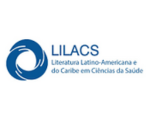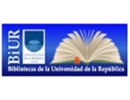The morbidity and mortality athenaeum as a collective learning tool in a general surgery service
DOI:
https://doi.org/10.31837/cir.urug/3.2.2Keywords:
athenaeum, morbidity, mortality, , tool, learningAbstract
Introduction. Teaching in the surgical clinic represents a teaching challenge since it includes undergraduate, postgraduate, as well as training teachers. In it we must include teaching, assistance, research as well as clinical management aspects.
Objectives. To analyze the morbidity and mortality athenaeum as a teaching tool through the analysis of the complicated patient care process.
Method In the period May 2017 to May 2018, all the complicated patients were registered in the Surgical Clinic number 3.
Results 38 complicated patients from a total of 470 coordination operations (8%) were analyzed. The time to diagnosis of the complication was 4 days and the average hospitalization time was 14 days. According to Dindo – Clavien they were classified in the following grades: I: 6, II: 8, IIIa: 3, IIIb: 5, IVa: 4, IVb: 5 and V: 7 cases. Mortality was 1.5%, linked to complex surgery, elderly patients and late diagnosis of the complication.
Conclusions The morbidity and mortality athenaeum constitutes an educational tool for all training levels in the surgical clinic. Knowing the complications, their frequency, their type and how to prevent them allowed us to develop strategies to make the early diagnosis.
Downloads
Metrics
References
2- Dindo D, Demartines N, Clavien PA. Classification of surgical complications: a new proposal with evaluation in a cohort of 6336 patients an results of a survey. Ann Surg. 2004;240:205-13.
3- Algieri RD, Grzona E, Ferrante MS, Franco Alanis F, Cipollone S. Valoración del ateneo de morbimortalidad como herramienta de enseñanza durante la residencia de cirugía general. HospAeronáut Cent. 2014; 9:92-101.
4- Gore DC. National survey of surgical morbidity and mortality conferences. Am J Surg. 2006;191:708-714.
5- Tevis SE, Cobian AG, Truong HP, Craven MW, Kennedy GD. Implications of multiple complications on the postoperative recovery of general surgery patients. Ann Surg. 2016;263:1213–8.
6- Gomez-Rosado JC, Salas-Turrens J, Olry-de-Labry-Lima A. Análisis de los costes económicos asociados a las complicaciones en cirugia general. Cir Esp. 2018;96:292-9.
7- Gargiullo V, Núñez V, Osterkamp K.,Patri F, Perrone E, Quagliata, V.Complicaciones postquirúrgicas en cirugías de coordinación[monografía de grado]. Montevideo: Clínica Quirúrgica 3, Hospital Maciel,Facultad de Medicina, UDELAR; set. 2017.
8- Wagner G, ValsangiacomoP,Rodriguez Cantera G, Segura D, Ruso L. Procalcitonina y proteína C reactiva como marcadores precoces de falla de sutura digestiva. Presentado En: 68º Congreso Uruguayo de Cirugía. 2017. 28-30 Noviembre, Montevideo. Uruguay.
9- Eappen S, Lane BH, Rosenberg B, Lipsitz SA, Sadoff D, Matheson D, et al. Relationship between occurrence of surgical complications and hospital finances. JAMA. 2013;309:1599–606.
10- Dimick JB, Pronovost PJ, Cowan JA, Lipsett PA. Complications and costs after high-risk surgery: Where should we focus quality improvement initiatives? J Am CollSurg. 2003;196:671–8.
Downloads
Published
How to Cite
Issue
Section
License
All articles, videos and images published in Revista Cirugía del Uruguay are under the Creative Commons CC licenses, which is a complement to the traditional copyright, in the following terms: first, the authorship of the referred document must always be acknowledged and secondly none of the article or work published in the journal may have commercial purposes of any nature. The authors retain their copyrights and give the magazine the right of first publication of their work, which will be simultaneously subject to the Creative Commons Attribution-NonCommercial 4.0 International License license that allows the work to be shared whenever the initial publication is indicated in this journal.






























